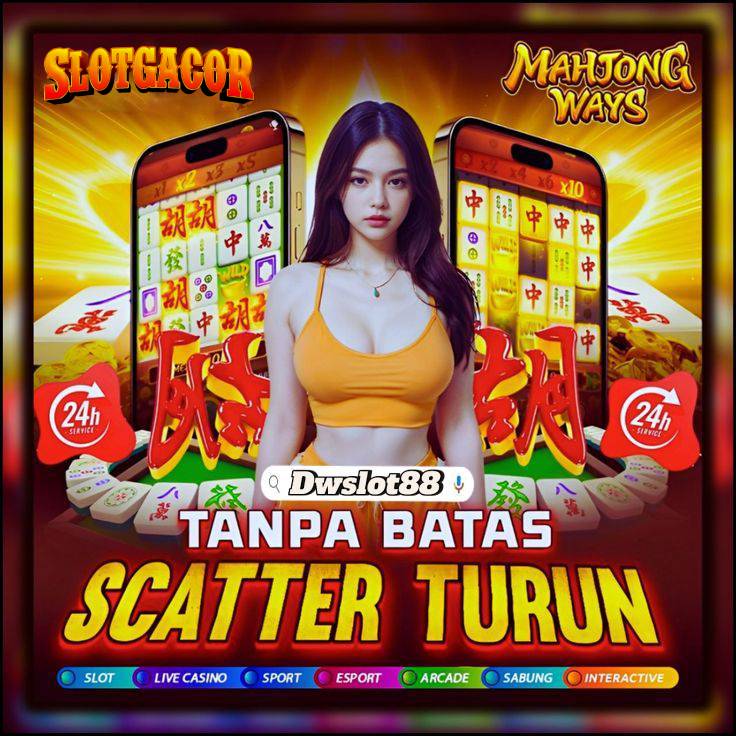Building upon the foundation laid in The Trickster Archetype in Modern Games Like Le Zeus, this article explores how humor functions as a vital component in portraying and enriching the trickster archetype within contemporary gaming. Humor not only amplifies the trickster’s unpredictable and mischievous nature but also deepens the player’s emotional connection, motivation, and overall engagement. By examining various forms of humor and their impact on gameplay and storytelling, we uncover how developers craft memorable, compelling characters who continue to challenge and entertain players across genres and cultures.
Table of Contents
- 1. The Role of Humor in Reinforcing the Trickster Archetype in Games
- 2. Humor as a Player Engagement Tool: Psychological Perspectives
- 3. Types of Humor Employed by Trickster Characters in Modern Games
- 4. Interactive Humor: How Player Choices Shape the Trickster’s Humor
- 5. The Cultural and Social Dimensions of Humor in Trickster Archetypes
- 6. The Evolution of Humor in Trickster Characters Across Game Genres
- 7. Case Studies: Iconic Trickster Characters and Their Humor Strategies
- 8. The Future of Humor and Trickster Archetypes in Gaming
- 9. Connecting Humor and the Broader Trickster Archetype in Game Design
- 10. Bridging Back: How Humor Complements the Core Attributes of the Trickster in Modern Games
1. The Role of Humor in Reinforcing the Trickster Archetype in Games
a. How humor accentuates the trickster’s unpredictable nature
Humor serves as a powerful tool in emphasizing the trickster’s unpredictable and chaotic essence. By integrating witty dialogue, slapstick antics, or ironic situations, game designers amplify the surprise element inherent to the archetype. For instance, characters like Kreia in the Kotor series use sardonic humor to showcase their cunning and capricious personality, keeping players on edge while reinforcing the trickster’s disruptive role within the narrative.
b. The psychological impact of humor on player perception of the trickster
Humor influences how players perceive and relate to trickster characters. It fosters a sense of familiarity and relatability, softening the archetype’s disruptive qualities and making them more engaging. According to psychological studies, humor activates reward centers in the brain, encouraging players to view the trickster as charming or endearing, which enhances immersion and emotional investment. This duality allows players to enjoy deception and mischief without feeling frustration or alienation.
c. Examples of humorous tactics used by trickster characters to manipulate players
Many trickster figures employ humor as a manipulation strategy. For example, Vaas Montenegro in Far Cry 3 uses dark humor and unpredictable antics to unsettle players and establish psychological dominance. Similarly, Loki in the God of War series employs clever banter and ironic twists to mislead and influence players’ perceptions, transforming typical antagonism into a layered, humorous engagement.
2. Humor as a Player Engagement Tool: Psychological Perspectives
a. The role of humor in creating emotional bonds between players and trickster characters
Humor acts as a bridge, forging emotional bonds between players and trickster characters. When characters deliver witty lines or humorous antics, players often develop a sense of camaraderie or affection, even if the character’s actions are morally ambiguous. This emotional connection increases player investment, making the character’s deception or mischief more impactful and memorable.
b. Humor’s influence on player motivation and immersion
Research indicates that humor enhances motivation by making gameplay more enjoyable and less monotonous. It also boosts immersion by creating a lively, unpredictable game environment. For example, in Disco Elysium, humorous dialogue options and ironic scenarios deepen immersion and encourage players to explore the narrative more thoroughly, aligning with the trickster’s role as a catalyst for discovery.
c. The balance of humor and challenge: maintaining engagement without frustration
Achieving the right balance between humor and challenge is crucial. Excessive humor can trivialize gameplay, while too little may make trickster characters seem dull. Successful game design employs humor to diffuse tension during intense moments or to provide comic relief after difficult challenges, thus maintaining engagement without frustration. For instance, the witty banter of Geralt of Rivia in The Witcher 3 exemplifies this balance, where humor complements complex narratives and challenging quests.
3. Types of Humor Employed by Trickster Characters in Modern Games
a. Verbal wit and clever dialogue
Verbal humor, including puns, sarcasm, and clever retorts, is prevalent. Characters like GLaDOS in Portal exemplify this through their dry wit and sardonic comments, which serve to both amuse and unsettle players.
b. Visual humor and comedic animations
Visual gags, exaggerated facial expressions, and slapstick movements contribute significantly. For example, the slapstick antics of Banjo-Kazooie characters use exaggerated animations to evoke humor and enhance the playful nature of the game.
c. Situational irony and unexpected plot twists
Situational irony, where outcomes defy expectations, is a hallmark of trickster humor. Games like Undertale use unexpected twists to surprise players, creating humor rooted in the disparity between narrative expectations and actual events.
4. Interactive Humor: How Player Choices Shape the Trickster’s Humor
a. The effect of player agency on the humor delivery and trickster interactions
Player decisions directly influence how humor unfolds. In branching dialogue systems, choosing certain responses can elicit different humorous reactions from trickster characters, making humor feel more personalized and dynamic. For example, in Mass Effect, Shepard’s choices can lead to humorous exchanges that reflect their personality and influence the trickster’s behavior.
b. Dynamic humor responses based on player behavior
Advanced AI and scripting enable trickster characters to adapt humor based on player actions. This creates a sense of unpredictability and personalization. For instance, in Cyberpunk 2077, NPCs’ humorous responses vary depending on the player’s previous interactions, enhancing engagement through dynamic humor.
c. The role of dialogue trees and branching narratives in humor development
Dialogue trees allow players to explore different humorous pathways. Effective implementation ensures that humor remains relevant regardless of the chosen route, as seen in The Stanley Parable, where player choices lead to humorous and surprising narrative developments.
5. The Cultural and Social Dimensions of Humor in Trickster Archetypes
a. How cultural backgrounds influence humor styles in trickster characters
Humor is deeply rooted in cultural context. For example, the playful mischief of Japanese Kitsune differs markedly from Western trickster figures like Reynard the Fox. Modern games adapt these cultural nuances to appeal to diverse audiences, shaping humor style accordingly.
b. Humor as a reflection of societal norms and taboos within games
Humor often highlights societal norms or challenges taboos. For instance, South Park: The Stick of Truth uses satire and irreverence to comment on social issues through its trickster characters, prompting reflection while entertaining.
c. Cross-cultural reception: universal vs. culturally specific humor
While some humor, like slapstick or irony, has universal appeal, others depend on cultural references. Successful global games often incorporate a mix to resonate across cultures. An example is Overwatch, where humor styles vary among characters to appeal to diverse player bases.
6. The Evolution of Humor in Trickster Characters Across Game Genres
a. From myth-inspired to contemporary, genre-based humor adaptations
Historically, mythic tricksters like Loki or Anansi have inspired modern game characters that adapt humor to fit contemporary contexts. For example, the humorous antics of Deadpool in Marvel’s Midnight Suns reflect a modern, satirical adaptation of the archetype.
b. How humor differs in action, RPG, and adventure game contexts
Action games often use quick-witted banter and visual humor, RPGs favor witty dialogue and irony, while adventure games emphasize situational irony and character-driven humor. Each genre tailors humor to enhance engagement effectively.
c. The impact of technological advances (e.g., AI, voice modulation) on humor delivery
Emerging technologies like AI enable trickster characters to deliver more spontaneous, context-aware humor. Voice modulation amplifies comedic timing, as demonstrated in AI-driven NPCs in titles like Detroit: Become Human, making humor more immersive and personalized.
7. Case Studies: Iconic Trickster Characters and Their Humor Strategies
a. Comparative analysis of humor techniques in different game titles
In Portal, GLaDOS’s dry wit contrasts with the slapstick humor of Monkey Island’s Guybrush Threepwood. These differing techniques demonstrate how humor reinforces the trickster’s multifaceted nature.
b. How humor enhances the narrative and player connection in these cases
Humor provides memorable moments that deepen narrative engagement. For instance, Ness in EarthBound uses humorous dialogue to forge a strong emotional bond with players, transforming the game into a beloved classic.
c. Lessons learned from successful and less successful humor integrations
Successful humor respects cultural context, maintains narrative consistency, and balances comedic timing with gameplay flow. Conversely, forced or poorly timed humor can disconnect players, as seen in some attempts in AAA titles that relied heavily on slapstick without narrative integration.
8. The Future of Humor and Trickster Archetypes in Gaming
a. Emerging trends, such as adaptive humor driven by AI
Adaptive humor, powered by AI, promises personalized comedic interactions that respond to player behavior. Future titles may feature trickster characters capable of improvising humor, creating unique experiences for each player.
b. Potential challenges in balancing humor with serious themes
While humor enhances engagement, it risks trivializing serious themes if not carefully integrated. Developers must skillfully weave humor into narratives to preserve depth while maintaining levity.
c. Opportunities for innovative humor forms to deepen engagement
Emerging media, such as virtual reality and interactive AI-driven storytelling, open avenues for novel humor forms—such as immersive comedic scenarios—that can significantly deepen player engagement with trickster archetypes.
9. Connecting Humor and the Broader Trickster Archetype in Game Design
a. How humor deepens the archetype’s complexity and relatability
Humor adds layers to the trickster, portraying them as more than mere chaos agents. They become complex figures capable of wit, charm, and vulnerability, making them more relatable and multidimensional. This aligns with the parent theme’s emphasis on the archetype’s depth in modern narratives.
b. Integrating humor seamlessly into game mechanics and storytelling
Effective integration involves embedding humor into core mechanics—such as interactive puzzles or decision points—and narrative moments. For example, using humorous side quests or dialogue options enriches the overall experience without disrupting gameplay flow.
c. The importance of intentional humor to sustain player interest
Intentionality ensures humor serves narrative and engagement goals. Random or inconsistent humor can feel jarring, whereas well-planned comedic moments reinforce the archetype’s disruptive yet charming nature, maintaining sustained interest.
10. Bridging Back: How Humor Complements the Core Attributes of the Trickster in Modern Games
a. Reinforcing the trickster’s role as a disruptor and boundary-crosser through humor
Humor exemplifies the trickster’s boundary-crosser attribute by breaking conventions and subverting expectations through comedic surprise. This reinforces their role as catalysts of change within the game world.
b. The cyclical relationship between humor, deception, and engagement
Humor and deception form a cycle—humor masks deception, making trickery more palatable and engaging. This cyclical relationship sustains player interest by continually redefining the trickster’s role and keeping interactions fresh.


